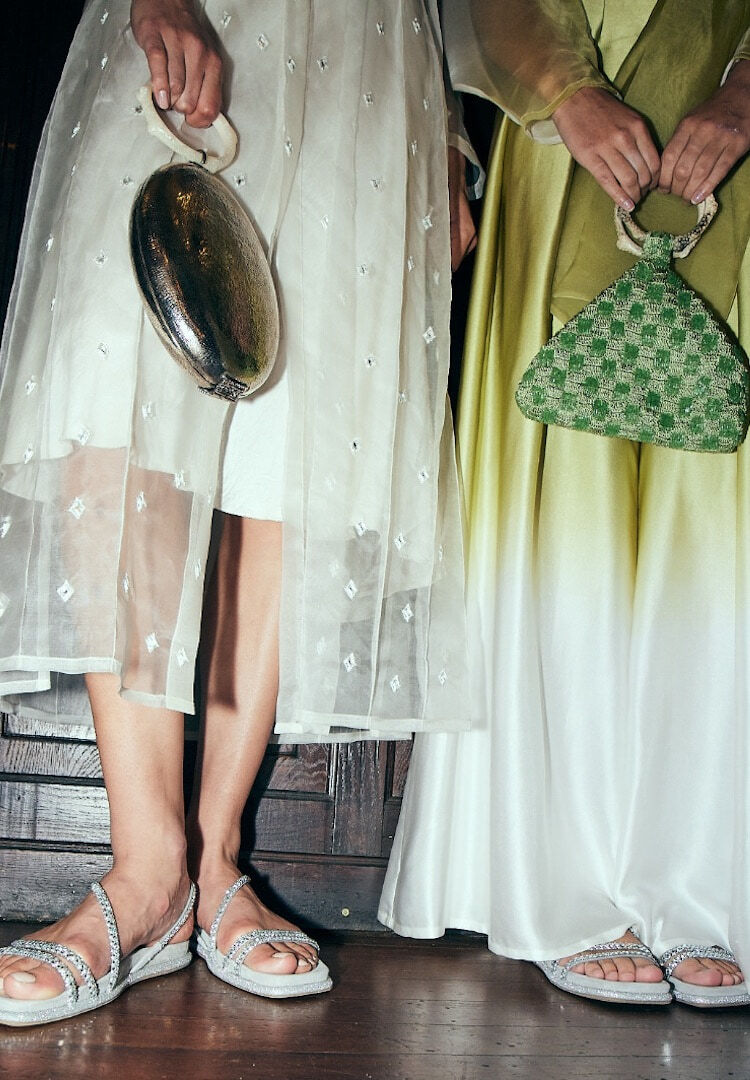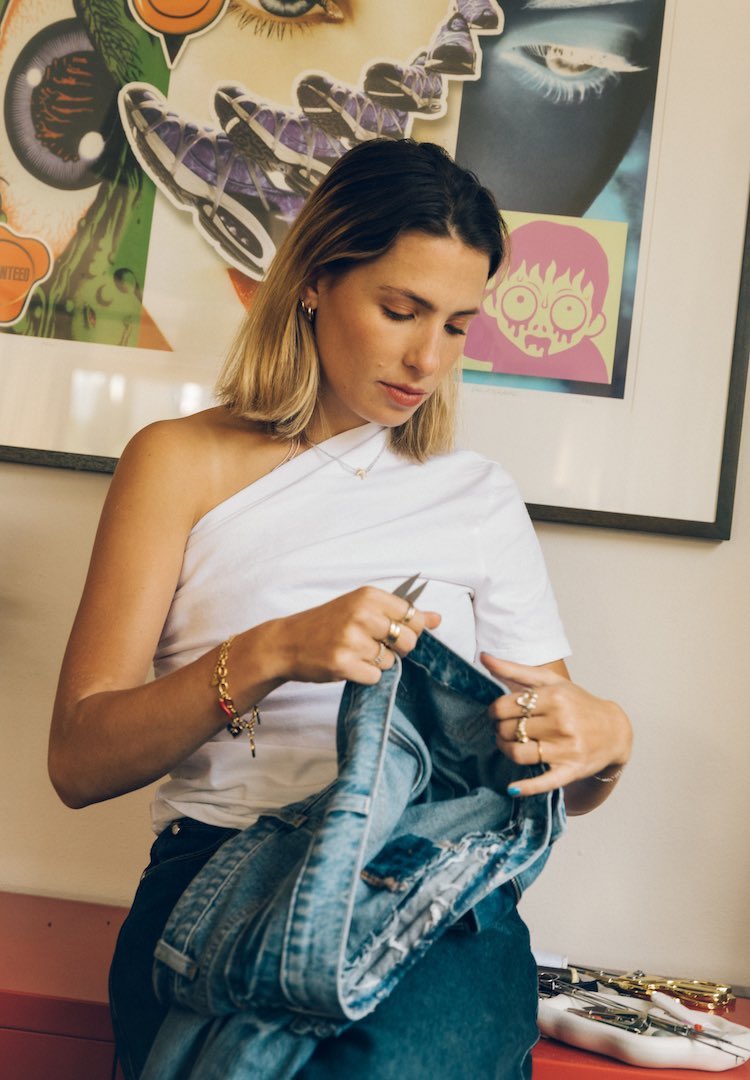Why is the ‘Depop generation’ still buying into ultra-fast fashion?
Words by Izzy Wight
A sartorial paradox.
While rotating through the same two hoodies for the last five weeks of Melbourne’s sixth lockdown, I’ve been daydreaming about my comeback outfit. Let me set the scene: it’s a Friday night, I’m double vaxxed with an icy gin and tonic in hand. I strut down the sticky bar hallway – my home-chopped ‘shaggy mullet’ flowing in the cool night air – and turn into the bathroom.
A cute girl (who smells like Santal 33) is touching up her green eyeshadow and turns to me. “I love your outfit! Where’d you get it?” she asks. “Oh, this? It’s all secondhand! Can you believe it?” I reply humbly and with a soft French accent (something I naturally developed over lockdown), knowing I am indeed better than everyone. We become best friends and visit her European holiday house every summer. End scene.
For more fashion news, shoots and features, head to our Fashion section.
This might be the only era in which it’s more impressive to scavenge for your outfit in a thrift store than have it gift-wrapped in a luxury boutique. According to Vogue Business, this is a product of the ‘Depop generation’ – those using thrifting, ‘flipping’ and secondhand marketplaces to bring sustainable fashion to the forefront of the socially conscious conversation.
As someone who lives in Melbourne’s inner north and shamelessly feeds into everything that entails (see above), I can attest to the fact that thrift stores are brimming with secondhand clothing converts. A good find at Savers is like winning the Y2K lottery. Now, more than ever, it’s cool to care – particularly about what goes in your wardrobe.
Despite our ethical fashion enthusiasm, the gap between what we want and what we actually buy may be wider than we think. With ultra-fast fashion only getting cheaper, quicker and more accessible, it’s hard to ignore and, more importantly, resist.
As Vox writer Terry Nguyen explains, the average price of clothing significantly declined between 2000 and 2014, while the number of garments doubled to over 100 billion per year. The 2010s welcomed the boom of offshore manufacturing and the rise of retail giants like Boohoo, Missguided, Asos and – TikTok’s new favourite – Shein.
TikTok’s melting pot of the world’s cultural corners is the perfect allegory for the complexity of the new generation’s school of thought. There’s a lot to be said about the eerie accuracy of the app’s algorithm (most of which I don’t understand, unsurprisingly) and my feed has become a stunning amalgamation of all my niche interests, creative passions and morbid fascinations.
In my frequent slack-mouthed scrolling, I’ve noticed a pattern. My feed is contrasted by ethical fashion content (locally-based brands to shop, thrifting tips, conscious consumerism 101) and mass-scale bulk fast-fashion hauls. The same generation explaining a circular fashion economy is funnelling millions of dollars into companies with murky manufacturing processes. How can both of these facts be true?
I get it. Even though I’m well-informed of the importance of ethical fashion practices – I’ve studied it, I write about it, I dream about it – there are still moments of moral conflict. At the start of last year, I’d just lost my job and was spending a lot of time switching between sheer panic and complete numbness (as a lot of us were).
An ad popped up on my Facebook sidebar and for the first time in my life, I clicked it. It transported me to a colourful womenswear wonderland, where everything was on-trend and under $20. I promptly added five items to my cart, making sure to size up (the sizing guides were either very vague or missing altogether).
This was in March 2020 and I received my final item in July of 2021. I knew from the first lime-green I Am Gia dupe that I had made a grave mistake. The stitching was coming apart, the dress was too short for my 5’4 frame and trying to get my body into it was a lengthy lesson in contortionism. I looked like a green sausage and my knickers were out. The best part? No return address.
According to a recent survey conducted by Dazed, most Gen Zers who buy into fast fashion do so for two reasons – accessibility and price. With the trend cycle moving at lightning-fast speed, the ease of finding exactly what you want – in multiple different colours and an inclusive variety of sizes – for an affordable price is certainly alluring.
It’s also important to note that as consumers have gotten smarter, fast fashion brands have too. Greenwashing (gaslighting customers into thinking your brand is sustainable by using ethical buzzwords) is rife in the retail industry and it’s difficult to know if you’re paying for sustainable values or just the idea of them. My advice? Trust your instincts, do your research and forgive yourself (and your friends) if you succumb to the temptations of fast fashion.
It’s widely understood that denying yourself something only makes you want it more. For example, if you’re giving up meat cold turkey in favour of a vegetarian diet, punishing yourself for slip-ups is going to make the forbidden so much more tantalising.
Every move you make in the right direction still has a positive impact and your money – as little as it may be – means something. We’re more informed, aware and accountable than we’ve ever been. Keep moving forward, be discerning and avoid sausage-like dupes at all costs.
This article was originally published on December 23, 2022.
Learn more about the future of fast fashion here.













